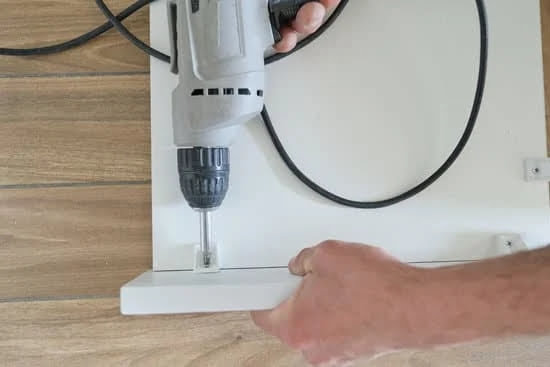Zinc oxide paint is a popular choice for preserving and protecting old house woodwork due to its unique properties. In this article, we will delve into the world of zinc oxide paint and explore why it is used on old house woodwork. We will also discuss the benefits and drawbacks of using this type of paint, as well as the process of removing it from woodwork.
Zinc oxide paint is a specialized type of paint that contains zinc oxide particles. This ingredient gives the paint its characteristic durability and resistance to weathering. It forms a protective barrier on the surface of the wood, shielding it from moisture, UV rays, and decay. This makes zinc oxide paint an ideal choice for old house woodwork that needs extra care and attention.
The use of zinc oxide paint on old house woodwork offers numerous benefits. Firstly, it extends the lifespan of the wood by preventing rot, decay, and insect damage. Secondly, it protects against discoloration caused by exposure to sunlight. Additionally, this type of paint provides excellent coverage and can be applied smoothly to achieve a high-quality finish.
However, there are also some drawbacks to consider when using zinc oxide paint on old house woodwork. One challenge is its removal process when it comes time for refinishing or restoration. Removing zinc oxide paint requires careful attention to prevent damage to the underlying wood while effectively stripping away the layers of paint.
In the next sections of this article, we will take a closer look at how to remove zinc oxide paint from old house woodwork safely and effectively. We will provide step-by-step instructions and share valuable tips for achieving a smooth finish that showcases the natural beauty of the wood underneath.
Understanding the removal process of zinc oxide paint from old house woodwork
Zinc oxide paint is commonly used on old house woodwork due to its excellent durability and protection against moisture, UV rays, and insects. However, there may come a time when you need to remove this paint to restore or refinish the woodwork. Understanding the removal process is essential to ensure that you can effectively strip away the zinc oxide paint without causing damage to the underlying wood.
The first step in removing zinc oxide paint is to determine the best approach for your specific situation. There are different methods available, such as chemical stripping, scraping, sanding, using heat guns or infrared paint removers, or even power sanding for stubborn areas. Each method has its advantages and disadvantages, so it’s important to evaluate which one will work best for your particular woodwork.
Regardless of the chosen removal method, caution must be taken during the process to avoid harming the woodwork. It is crucial not to apply excessive force while scraping or sanding as this can cause scratches or gouges in the wood. Additionally, care should be taken not to overuse chemicals or heat application as they can potentially weaken and discolor the wood.
To effectively remove zinc oxide paint from old house woodwork, gather all the necessary tools and materials beforehand. These may include a suitable paint remover or stripper specifically designed for removing zinc oxide paint, a scraper or putty knife with a flat edge for efficient scraping, sandpaper of varying grits for smoothing and refining surfaces after stripping, and protective gear such as gloves, goggles, and a mask to guard against chemical exposure.
| Tools | Materials |
|---|---|
| Paint remover/stripper | Gloves |
| Scraper or putty knife | Goggles |
| Sandpaper (various grits) | Mask |
Having the appropriate tools and materials at hand is crucial for a successful removal process. The right paint remover will effectively dissolve and soften the zinc oxide paint, while the scraper or putty knife will aid in gently lifting off the softened paint. Sandpaper will then help smoothen any remaining residue or unevenness on the wood surfaces.
By understanding the removal process of zinc oxide paint from old house woodwork and gathering the necessary tools and materials, you can embark on this project with confidence. Taking these initial steps will set you up for success as you proceed to execute the actual removal techniques outlined in subsequent sections of this article.
Preparation
When it comes to removing zinc oxide paint from old house woodwork, proper preparation is key to ensuring a successful and efficient process. Before diving into the removal process, it is essential to gather all the necessary tools and materials. This section will outline the required items and explain their importance in achieving effective results.
The first tool you will need is a quality paint remover specifically designed for removing zinc oxide paint. Look for a product that is safe for use on wood surfaces and has good reviews for its effectiveness. Additionally, having a scraper with a sharp edge will make it easier to remove the softened paint layers.
Sandpaper of varying grits is also essential for smoothing the wood surface after the paint removal process. Start with a coarser grit paper to remove any stubborn remnants of zinc oxide paint, then gradually move on to finer grit papers for a smooth finish. It’s recommended to have sandpaper in different grades such as 80, 120, and 220 for this purpose.
Protective gear should not be overlooked when preparing for the removal process. Wear gloves to protect your hands from chemical exposure or sharp edges during scraping. Goggles are crucial in safeguarding your eyes from any flying debris while working on the woodwork. Lastly, wearing a mask will help prevent inhalation of potentially harmful fumes or particles released during the removal process.
By having these tools and materials ready before starting the removal process, you can ensure that you have everything you need to remove the zinc oxide paint effectively and efficiently. With proper preparation in place, you are setting yourself up for success in restoring your old house woodwork back to its natural beauty.
Safety precautions when removing zinc oxide paint from old house woodwork
When it comes to removing zinc oxide paint from old house woodwork, it is crucial to prioritize safety precautions. Working with chemicals and potentially harmful fumes requires taking extra care to protect yourself. Here are some essential safety precautions to keep in mind during the removal process:
- Personal Protective Equipment (PPE): Before starting any work, ensure that you have the necessary protective gear. This includes gloves, goggles, and a mask. Gloves will protect your hands from any chemicals or sharp tools used during the process.
Goggles are essential to shield your eyes from any splatters or debris that may occur while scraping or sanding. A mask will help filter out harmful fumes and particles that can be released in the air during paint removal. - Work in a Well-Ventilated Area: Ventilation is key when working with chemicals. Make sure you are working in a space with proper airflow, such as opening windows and doors or using fans to circulate fresh air into the room. This helps minimize your exposure to potentially harmful substances and reduces the risk of inhaling fumes.
- Proper Disposal of Paint Remover and Waste Materials: Dispose of paint remover and waste materials responsibly according to local regulations. Avoid pouring paint remover down drains or disposing of it improperly as it can harm the environment. Follow guidelines for disposal or recycle options specific to your area.
Remember, safety should always be your top priority when removing zinc oxide paint from old house woodwork. By taking these precautions, you can minimize risks and ensure a safer working environment for yourself throughout the process.
Tools & Materials Checklist
- Chemical-resistant gloves.
- Safety goggles.
- N95 respirator mask or face mask for chemical protection.
- Paint remover suitable for use on zinc oxide paint.
- Scraper(s) in various sizes for different surfaces.
- Sandpaper (medium and fine grit).
- Protective drop cloths or plastic sheets to protect surrounding surfaces.
- Cleaning supplies for post-removal cleanup and disposal.
Tips for Enhanced Safety
- Read and follow the instructions provided by the manufacturer of the paint remover product.
- Test a small, inconspicuous area of the woodwork first to ensure compatibility with the paint remover and to assess any adverse reactions.
- Choose low-VOC or eco-friendly paint removers, if available, to minimize exposure to harmful chemicals.
- Keep a fire extinguisher nearby in case of accidental fires caused by flammable materials or heat sources utilized during the removal process.
By following these safety precautions and using the appropriate tools and materials, you can confidently proceed with removing zinc oxide paint from old house woodwork while prioritizing your well-being.
Step-by-step guide on removing zinc oxide paint from old house woodwork
Removing zinc oxide paint from old house woodwork can be a challenging task, but with the right tools and techniques, it can be done effectively. Follow this step-by-step guide to ensure a smooth and successful removal process:
- Prepare the area: Before starting the removal process, make sure to protect the surrounding areas by covering nearby furniture or flooring. This will prevent any accidental damage.
- Gather your tools and materials: To remove zinc oxide paint from woodwork, you will need a paint remover, scraper, sandpaper (medium grit), and protective gear such as gloves, goggles, and a mask. These tools are essential for ensuring your safety and making the removal process easier.
- Apply the paint remover: Start by applying the paint remover to a small area of the woodwork using a brush or sponge. Follow the manufacturer’s instructions on how long to leave it on for effective results.
- Scrape off the loosened paint: Once the paint remover has had enough time to work, use a scraper to gently scrape away the loosened zinc oxide paint. Be careful not to apply too much pressure as this may damage the woodwork.
- Sanding: After scraping off as much paint as possible, use medium-grit sandpaper to further smooth out any remaining residue or rough patches on the woodwork’s surface. Sand in the direction of the grain for best results.
- Repeat if necessary: Depending on the thickness of the zinc oxide paint layer, you may have to repeat steps 3-5 multiple times until all traces of paint are removed.
Remember to take breaks if needed and work in small sections at a time for better control over the process.
| Tools | Materials |
|---|---|
| Paint remover | Gloves |
| Scraper | Goggles |
| Sandpaper (medium grit) | Mask |
Techniques for dealing with stubborn or hard-to-remove zinc oxide paint
Dealing with stubborn or hard-to-remove zinc oxide paint can be a challenge, but there are several techniques that can help make the process easier and more effective. In this section, we will explore some alternative methods to remove stubborn or hard-to-reach areas of zinc oxide paint from old house woodwork.
Using heat guns or infrared paint removers
One technique for dealing with stubborn zinc oxide paint is to use heat guns or infrared paint removers. These tools can soften and loosen the paint, making it easier to scrape off. When using a heat gun, it is important to hold it a few inches away from the painted surface to prevent scorching or damaging the wood beneath. It may also be necessary to use a scraper or sandpaper to remove any remaining residue after using the heat gun.
Chemical strippers
Another method for removing stubborn zinc oxide paint is using chemical strippers. These products work by breaking down the chemical bonds in the paint, making it easier to scrape off.
Before using a chemical stripper, it is essential to read the manufacturer’s instructions carefully and follow all safety precautions such as wearing gloves and working in a well-ventilated area. It is also important to test a small, inconspicuous area of the woodwork first to ensure that the stripper does not damage or discolor the wood.
Power sanding
In some cases, power sanding may be necessary to remove stubborn or hard-to-reach areas of zinc oxide paint. Power sanders can quickly and effectively strip away layers of paint, but they should be used with caution as they can easily damage the wood if not handled properly. It is essential to use a low-grit sandpaper initially and gradually increase the grit as needed while being mindful not to apply too much pressure on the sander.
When using any of these techniques, it is important to take precautions and work carefully to avoid damaging the woodwork. It may also be helpful to have professional guidance or assistance if you are unsure about using these methods yourself. Remember, the goal is to safely and effectively remove the zinc oxide paint while preserving the natural beauty of the wood.
Best practices for ensuring a smooth finish after removing zinc oxide paint
Surface Preparation
Before applying a new finish or paint, it is essential to prepare the surface properly. Start by thoroughly cleaning the woodwork to remove any dirt, dust, or residue left behind from the zinc oxide paint removal process. A mild detergent and water solution can be used for this purpose. Rinse with clean water and allow the woodwork to dry completely before proceeding.
Next, inspect the woodwork for any imperfections such as cracks, dents, or holes. Fill these areas with an appropriate wood filler and allow it to dry according to the manufacturer’s instructions. Once dry, sand the entire surface with a fine-grit sandpaper in the direction of the wood grain. This step will help smooth out any rough patches and ensure an even finish.
Choosing the Right Finish
When selecting a new finish or paint for your old house woodwork, consider both aesthetics and functionality. For a natural-looking finish that enhances the beauty of the wood, opt for clear varnish or stain. These options allow the natural grain and color of the wood to shine through while providing protection against moisture and UV damage.
If you prefer a painted look, choose a high-quality paint specifically formulated for use on wood surfaces. Look for products that offer durability, resistance to chipping and peeling, as well as easy application.
Application Techniques
To achieve a smooth finish when applying a new coating after removing zinc oxide paint, proper application techniques are crucial. Use a quality brush or roller that is suitable for your chosen finish type. Follow the manufacturer’s instructions regarding application methods and drying times.
Apply thin coats of varnish or paint in even strokes, working in small sections at a time. Avoid overloading your brush or roller with too much product as this can lead to drips and uneven coverage. Allow each coat to dry fully before proceeding with additional coats.
By following these best practices, you can ensure a smooth and professional-looking finish on your old house woodwork after removing zinc oxide paint. Taking the time to properly prepare the surface, choosing the right finish, and employing careful application techniques will help restore the natural beauty of the wood while providing long-lasting protection.
Maintaining and protecting old house woodwork after removing zinc oxide paint
After successfully removing zinc oxide paint from old house woodwork, it is important to take steps to maintain and protect the wood in order to preserve its beauty and prevent future damage. Here are some best practices for maintaining and protecting old house woodwork:
- Regular Cleaning: To prevent build-up and keep the woodwork in good condition, it is important to clean it regularly. Use a soft cloth or dusting brush to remove dust and dirt from the surface. Avoid using abrasive cleaners or harsh chemicals that can damage the wood.
- Applying Sealants or Varnishes: After removing the zinc oxide paint, consider applying an appropriate sealant or varnish to protect the wood from moisture and other environmental factors. Make sure to choose a product that is suitable for the type of wood you have, as different woods may require different types of sealants or varnishes.
- Preventing Future Paint Adhesion: If you do not plan on repainting the woodwork, it is important to take steps to prevent future paint adhesion. One way to achieve this is by lightly sanding the surface of the wood after removing the paint. This will help remove any remaining residue and create a slightly rough texture that makes it less likely for new paint to adhere strongly.
- Regular Maintenance: Keep an eye on the condition of the woodwork and address any issues promptly. Check for signs of damage such as cracks, peeling, or discoloration, and take appropriate measures to repair or restore the wood as needed. This may include filling cracks with wood filler, sanding down rough spots, or applying touch-up paint where necessary.
By following these maintenance practices, you can ensure that your old house woodwork remains in excellent condition for years to come. Regular cleaning, proper sealing, preventing future paint adhesion, and addressing any issues promptly will help preserve the natural beauty of the wood and protect it from further damage.
Conclusion
In conclusion, effectively removing zinc oxide paint from old house woodwork can provide numerous benefits and restore the natural beauty of the wood. Understanding the removal process and taking appropriate safety precautions are key to achieving successful results. By following the step-by-step guide and utilizing techniques for dealing with stubborn paint, homeowners can ensure a smooth finish for their woodwork.
One of the main advantages of removing zinc oxide paint is the ability to reveal the inherent beauty of the wood underneath. Old house woodwork often possesses intricate details and unique grain patterns that are hidden by layers of paint. Once the zinc oxide paint is removed, these features can be showcased and appreciated, adding character and charm to the space.
Additionally, removing zinc oxide paint allows for proper surface preparation before applying a new finish or paint. This ensures better adhesion and durability, extending the lifespan of the woodwork. By choosing the right type of paint or stain, homeowners can enhance and preserve their woodwork, protecting it from future damage while maintaining its historical integrity.
It is important to note that proper maintenance is crucial after removing zinc oxide paint. Regular cleaning and dusting help prevent build-up or damage, while applying sealants or varnishes protects against future paint adhesion. By implementing these best practices, homeowners can enjoy their beautifully restored old house woodwork for years to come.
Frequently Asked Questions
How do you remove paint from old wood trim?
To remove paint from old wood trim, start by preparing the area. Lay down a drop cloth to catch any paint chips and dust. Next, wear protective gloves and goggles to ensure your safety. Begin by using a paint scraper or putty knife to gently scrape away as much paint as possible. Be careful not to damage the wood underneath.
If there are stubborn areas, you can try using sandpaper or a power sander to gently sand away the remaining paint. Another option is to use a chemical paint stripper, following the manufacturer’s instructions carefully. This can help break down the paint layers for easier removal. After removing the paint, clean the wood trim with warm soapy water and a soft brush, then rinse and allow it to dry completely before refinishing or repainting.
How do you remove paint from wood trim without damaging the wood?
When removing paint from wood trim without damaging it, it’s important to take a gentle approach. One method is to use heat. You can apply direct heat from a heat gun or hairdryer set on high, holding it several inches away from the trim surface. Heat will soften the paint, making it easier to scrape off with a putty knife or scraper tool.
Be cautious not to overheat the wood as this can cause damage too. Another option is using a chemical-based stripping gel suitable for wood surfaces, following the manufacturer’s instructions closely and testing it on a small inconspicuous area first before applying it more widely on the trim. The gel helps dissolve and loosen the paint layers so that they can be easily scraped off without harming the wood beneath.
How do you remove metal paint from wood?
Removing metal paint from wood requires some care to prevent damaging the wooden surface while effectively removing the unwanted paint layerings.
Firstly, determine if there is rust present on any metal parts attached to or embedded within the wood; if so, address that separately before turning your attention solely towards tackling the painted sections of your wooden item or trim piece.

Hi everyone! I’m a woodworker and blogger, and this is my woodworking blog. In my blog, I share tips and tricks for woodworkers of all skill levels, as well as project ideas that you can try yourself.





